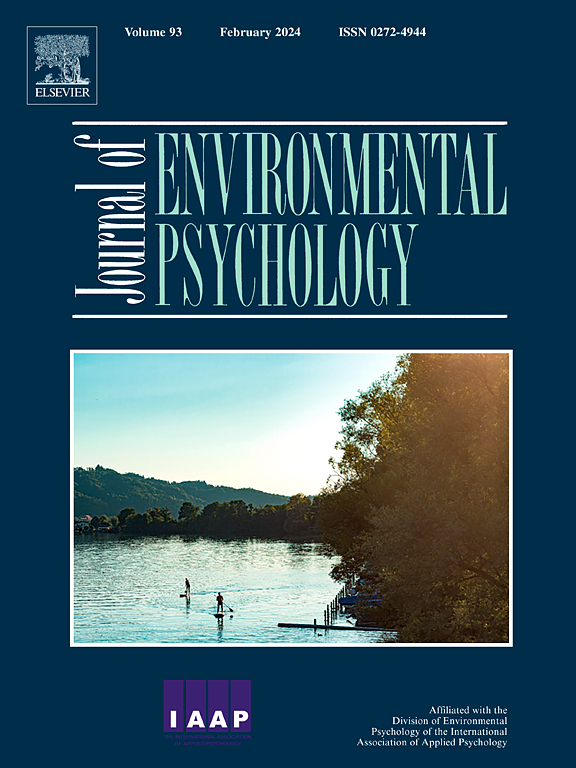Compassion is key: How virtually embodying nature increases connectedness to nature
IF 6.1
1区 心理学
Q1 ENVIRONMENTAL STUDIES
引用次数: 0
Abstract
Education for sustainable development and environmental psychology call for more systematic evidence regarding the role of emotions in sustainability-related attitudes, competencies, and behaviour. At the same time, immersive Virtual Reality (iVR) technology is discussed as a promising research approach for achieving this goal. However, research on the emotional processes explaining the high impact of iVR on nature connectedness is still in its infancy. Therefore, we conducted a study to further investigate the role of emotions for nature connectedness induced by virtually embodying a representative of nature (a tree) in iVR. We tested N = 85 students who were randomly assigned to one of two conditions: a threatening scenario, including a threat in the form of a forest fire at the end of the experience (n = 42), or a non-threatening scenario without the forest fire (n = 43). Emotions (anger, anxiety, sadness, joy and compassion) felt during the experience were assessed retrospectively with an extended version of the PANAS. To capture physical arousal during the iVR experience, participants wore an electrodermal activity (EDA) measurement device during the entire iVR exposure. The tests for mediation effects showed that compassion rather than basic emotions (anger, anxiety, sadness, or joy) explains the development of nature connectedness. Regarding the moderation effects, we found that the impact of virtual body ownership on anger, anxiety, and compassion differed based on the scenario type. Interaction effects showed that the threatening scenario induced stronger negative emotions (anger, anxiety, sadness) and compassion. These results were corroborated by the physiological reaction data of the participants. Based on our findings, we stress that exploring a virtual threat to nature can be perceived as a threat to oneself and can induce strong emotional and physiological reactions. Moreover, our results indicate that compassion is a distinct emotion with distinct effects to other emotions such as anger, anxiety, sadness, or joy. Subsequently, we build a case for focusing on compassion as a crucial factor in building nature connectedness.
求助全文
约1分钟内获得全文
求助全文
来源期刊

Journal of Environmental Psychology
Multiple-
CiteScore
10.60
自引率
8.70%
发文量
140
审稿时长
62 days
期刊介绍:
The Journal of Environmental Psychology is the premier journal in the field, serving individuals in a wide range of disciplines who have an interest in the scientific study of the transactions and interrelationships between people and their surroundings (including built, social, natural and virtual environments, the use and abuse of nature and natural resources, and sustainability-related behavior). The journal publishes internationally contributed empirical studies and reviews of research on these topics that advance new insights. As an important forum for the field, the journal publishes some of the most influential papers in the discipline that reflect the scientific development of environmental psychology. Contributions on theoretical, methodological, and practical aspects of all human-environment interactions are welcome, along with innovative or interdisciplinary approaches that have a psychological emphasis. Research areas include: •Psychological and behavioral aspects of people and nature •Cognitive mapping, spatial cognition and wayfinding •Ecological consequences of human actions •Theories of place, place attachment, and place identity •Environmental risks and hazards: perception, behavior, and management •Perception and evaluation of buildings and natural landscapes •Effects of physical and natural settings on human cognition and health •Theories of proenvironmental behavior, norms, attitudes, and personality •Psychology of sustainability and climate change •Psychological aspects of resource management and crises •Social use of space: crowding, privacy, territoriality, personal space •Design of, and experiences related to, the physical aspects of workplaces, schools, residences, public buildings and public space
 求助内容:
求助内容: 应助结果提醒方式:
应助结果提醒方式:


